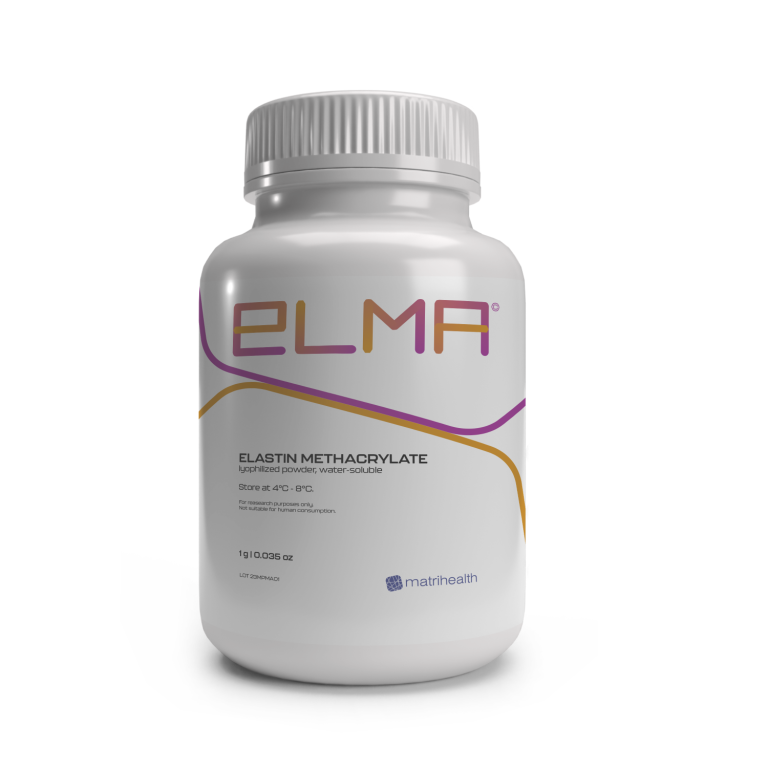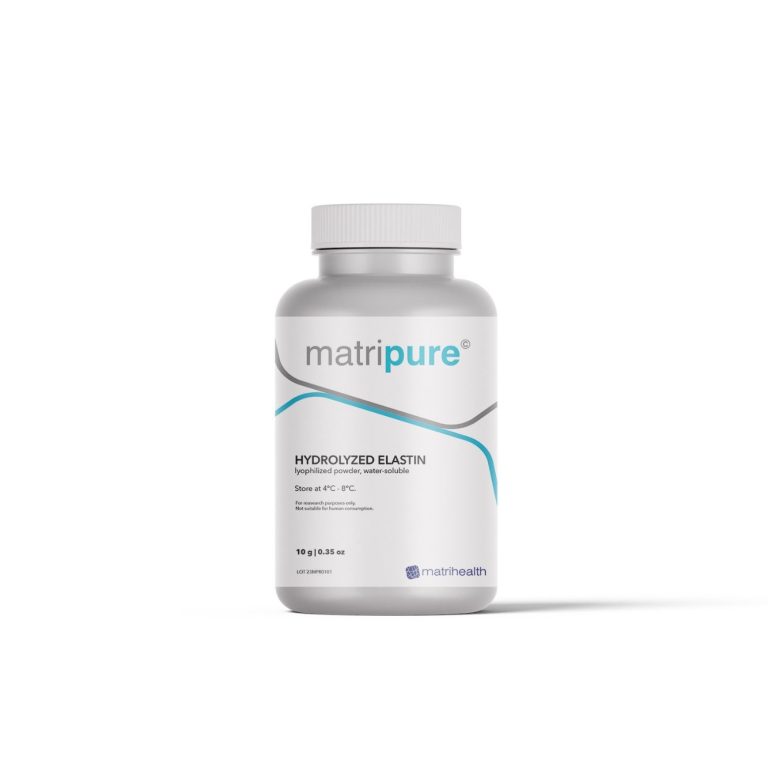Biomaterial inks & Biomaterials for 3D-Bioprinting
Biomaterial inks and biomaterials are printed layer-by-layer into 3-dimensional structures using bioprinting. They are ideally suited for applications in tissue engineering and research activities in the pharmaceutical and medical fields. With our unique material elastin, it is now possible for the first time to make elastin usable for bioprinting.


ELMA - modified Elastin for 3D-Bioprinting
With ELMA, matrihealth introduces for the first time an elastin methacrylate for advanced 3D bioprinting and tissue engineering. It enables a near-natural supplement for the production of an artificial extracellular matrix.
- Methacrylated elastin for bioprinting
- Important building protein of ECM
- Elastin available for bioprinting for the first time
- Ideal for printing tissues for tissue engineering
- Very good processability with all common bioprinters
- Excellent compatibility with gelatin and collagen
Biomaterial inks
Elastin-based biomaterial inks for your research and development projects.

matripure© A, soluble high molecular weight hydrolyzed elastin
HIGHEST BIOACTIVITY THROUGH NATURAL RESOURCES
Our biomaterial inks are made from high quality natural resources to ensure the highest bioactivity. Like natural elastin, all elastin-based biomaterial inks contain post-translational modifications such as hydroxyproline and desmosine in native ratios.
Basic materials
Our high-purity elastin hydrolysates are ideal base materials for developing your own biomaterial inks.

matripure© B, soluble low molecular weight hydrolyzed elastin
The shortage of donor organs and the body's immune response to implanted organs and tissues are leading to efforts to develop artificial tissues based on the body's own cells. One approach in this area of medical research, known as tissue engineering, is bioprinting. Bioprinting is an additive manufacturing process in which almost any geometric shape can be created by applying material in layers. In this process, the body's own cells are usually "printed" into a support structure made of biocompatible hydrogels, which gives the tissue its initial shape and is gradually replaced by cultured tissue. These hydrogels are usually made from cell-compatible materials such as collagen, alginate, gelatin, as well as specialty ceramics and biocompatible polymers, some of which are already found in natural tissue. Our elastin enables the production of biomaterial inks with an elastin content in appreciable quantities. This enables both the incorporation of elastin in the formation of new tissue and thus the production of naturally mimetic tissue, as well as the targeted adjustment of mechanical properties and improved replication of the extracellular matrix. The combination of the novel component elastin and the excellent properties of our biomaterial inks offer our customers many advantages and represent a unique selling point compared to products available on the market.
What is Bioprinting?
Benefit from our many years of experience with biomaterial inks and contact us to jointly find the right materials and material combinations for your problems.
Talk to our experts!
© 2023
Wir benötigen Ihre Zustimmung zum Laden der Übersetzungen
Wir nutzen einen Drittanbieter-Service, um den Inhalt der Website zu übersetzen, der möglicherweise Daten über Ihre Aktivitäten sammelt. Bitte überprüfen Sie die Details in der Datenschutzerklärung und akzeptieren Sie den Dienst, um die Übersetzungen zu sehen.
